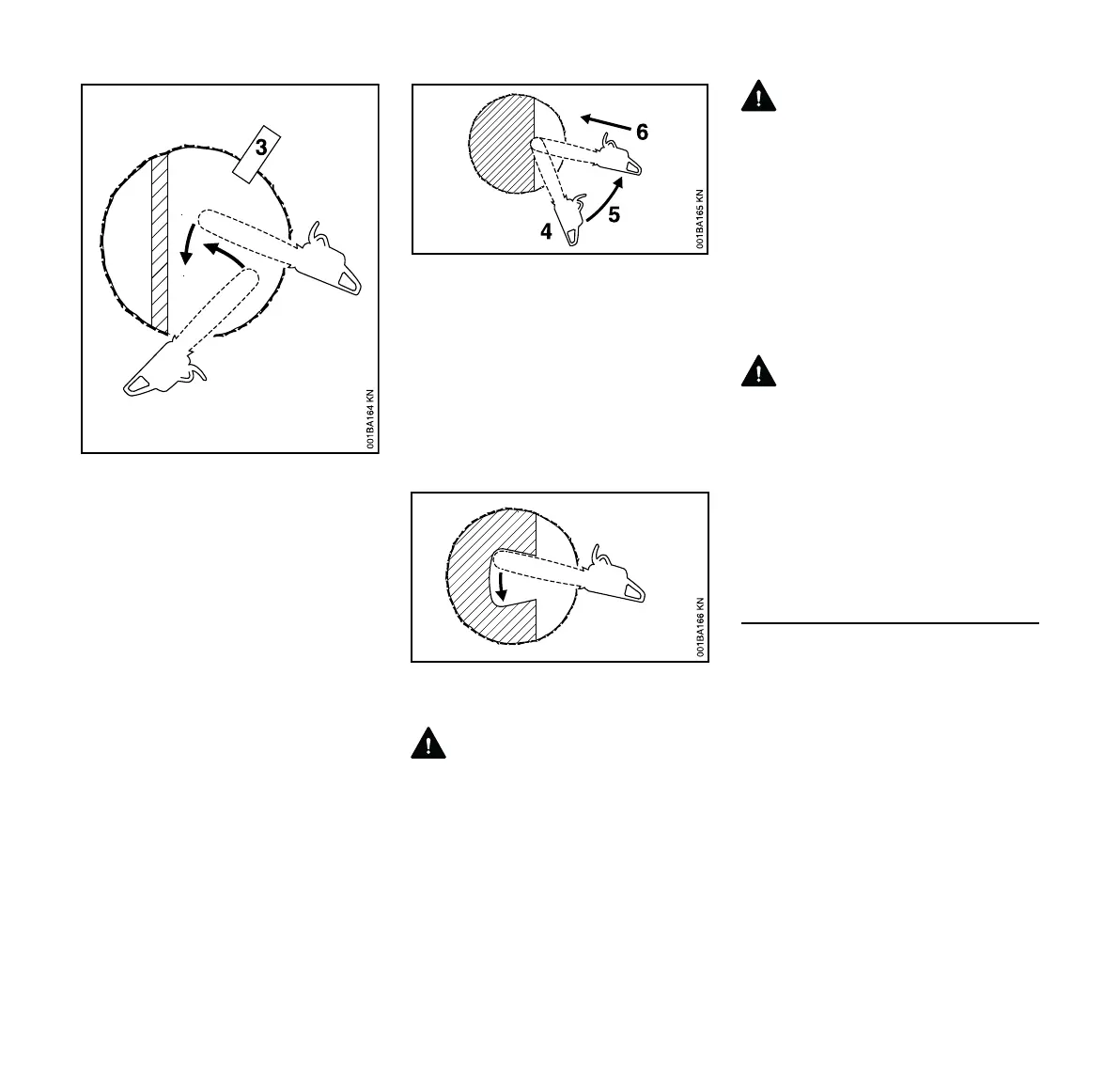MS 194 C
English
25
Avoid repositioning the saw more than
necessary. When repositioning for the
next cut, keep the guide bar fully
engaged in the kerf to keep the felling
cut straight. If the saw begins to pinch,
insert a wedge to open the cut. On the
last cut, do not cut the hinge.
Plunge-cut Method
Timber having a diameter more than
twice the length of the guide bar requires
the use of the plunge-cut method before
making the felling cut.
First, cut a large, wide felling notch.
Make a plunge cut in the center of the
notch.
The plunge cut is made with the guide
bar nose. Begin the plunge cut by
applying the lower portion of the guide
bar nose to the tree at an angle. Cut until
the depth of the kerf is about the same
as the width of the guide bar. Next, align
the saw in the direction in which the
recess is to be cut.
With the saw at full throttle, insert the
guide bar in the trunk.
Enlarge the plunge cut as shown in the
illustration.
WARNING
There is an extreme danger of kickback
at this point. Extra caution must be taken
to maintain control of the saw. To make
the felling cut, follow the sectioning
method described previously.
If you are inexperienced with a chain
saw, plunge-cutting should not be
attempted. Seek the help of a
professional.
WARNING
In order to reduce the risk of personal
injury, never stand directly behind the
tree when it is about to fall, since part of
the trunk may split and come back
towards the operator (barber-chairing),
or the tree may jump backwards off the
stump. Always keep to the side of the
falling tree. When the tree starts to fall,
withdraw the bar, shut off the engine and
walk away on the preplanned escape
path. Watch out for falling limbs.
WARNING
Be extremely careful with partially fallen
trees which are poorly supported. When
the tree hangs or for some other reason
does not fall completely, set the saw
aside and pull the tree down with a cable
winch, block and tackle or tractor. If you
try to cut it down with your saw, you may
be injured.
MAINTENANCE, REPAIR AND
STORING
Maintenance, replacement, or repair of
the emission control devices and
systems may be performed by any
nonroad engine repair establishment or
individual. However, if you make a
warranty claim for a component which
has not been serviced or maintained
properly or if nonapproved replacement
parts were used, STIHL may deny
coverage.
